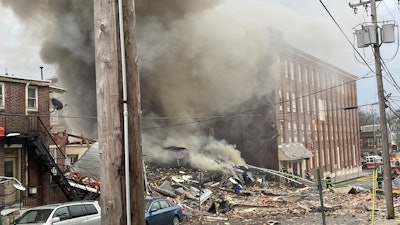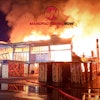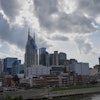
Investigators looking for the cause of a deadly explosion that leveled part of a Pennsylvania chocolate factory faced an even more difficult task Monday as they combed through wreckage that was extensively picked apart and moved around during the intensive weekend search for victims and survivors.
Seven people were killed and several others wounded in the powerful blast at the R.M Palmer Co. plant in West Reading, Pennsylvania, about 60 miles (96 kilometers) northwest of Philadelphia. One survivor was pulled from the rubble hours after the explosion rattled windows and shook houses.
With the recovery effort now over, attention turned to identifying the cause — a task complicated by the jumbled wreckage.
"The No. 1 goal of this, once the fire was out, gas stopped, is to look for the victims," Pennsylvania State Police Master Trooper David Beohm said at a news conference Monday afternoon. "So with that, when they picked the building apart with the excavator, yes, it makes it really hard then to try to figure out things. ... It makes it really difficult to try to come up with a cause."
Authorities declined to address reports that plant workers had detected an odor of gas before the explosion. The gas utility UGI said it had received no reports of a gas leak at the family-owned candy company.
"Everything's on the table at this point because we're still not done with the investigation. To say it's one way or another, I would not say that at this point," Beohm said. Two state police fire marshals are working to determine the cause and origin of the blast, he said.
The U.S. Occupational Safety and Health Administration, which regulates workplace safety, was also at the site.
Natural gas wasn't the only possible cause.
Chocolate companies and other food manufacturers must take steps to mitigate the risk of fire and explosion from flammable dust produced by ingredients like cocoa powder and corn starch, said Holly Burgess, technical lead for industrial and chemical safety at the National Fire Protection Association, a nonprofit group that produces hundreds of codes and standards.
Burgess said smaller particles that stay aloft pose a greater danger than bigger particles that quickly fall to the floor. Food manufacturers are supposed to determine the combustibility of the dust, perform a hazard analysis and then take steps to manage it.
"Each batch is different, so the chocolate material in cocoa that I'm getting from one place might have a bigger particle size or a smaller particle size. So that's where they usually need to do their own testing," said Burgess, speaking generally and not about the situation at Palmer.
Commercial ovens and furnaces, and commercial refrigerant using ammonia, are other primary explosive hazards at food plants, she said.
Records from OSHA, the federal workplace safety agency, show only one violation at the West Reading plant over the past five years. In 2018, an employee lost the tip of a finger during the cleaning of a pneumatically pressurized ball valve. The company agreed to pay a $13,000 fine.
In January, records show, OSHA levied a penalty of more than $12,000 after an inspection at R.M. Palmer's plant in nearby Wyomissing. Details of that case were not immediately available.
R.M. Palmer said in a weekend statement that everyone at the company was devastated, and it was reaching out to employees and their families through first responders and disaster recovery organizations because its communication systems were down. "The tragic events that occurred on Friday have had a profound impact on all of us at R.M. Palmer, and we appreciate the outpouring of support as all of us continue to deal with the loss of our friends and coworkers," the company said on Facebook Sunday.
The company has not commented further. It did not respond to questions from The Associated Press on Monday.
The Berks County coroner's office identified two of the victims as 49-year-old Amy Sandoe of Ephrata and 60-year-old Domingo Cruz of Reading and said "additional forensic medical examinations" would be needed to positively identify the other five victims. Autopsies were expected to be completed by the end of week, officials said.
Rescue crews had been using heat-imaging equipment and dogs to search for possible survivors after the blast destroyed one building and damaged a neighboring building. Crews were using heavy equipment to methodically and carefully pull debris from the site, according to police Chief Wayne Holben.
Three buildings around the site were condemned as a precaution until further examination by structural engineers to ensure their safety.
Officials said they had no update on the condition of a woman pulled alive from the rubble early Saturday. Mayor Samantha Kaag has said she had apparently been on the second floor and was found in a "hopeful circumstance," calling out to rescuers despite her injuries after a dog found her.
Reading Hospital said it received 10 patients and transferred two to other facilities, while two others were admitted in good and fair condition, respectively, and the others had been discharged. Dr. Charles Barbera, the hospital's president and CEO, said one of the admitted patients was discharged Monday.
UGI spokesperson Joe Swope said the utility detected leaks at a few street-level locations some distance from the plant after the gas was turned back on, and completed repairs. "The company believes these are unrelated to the explosion at Palmer," he said.






















